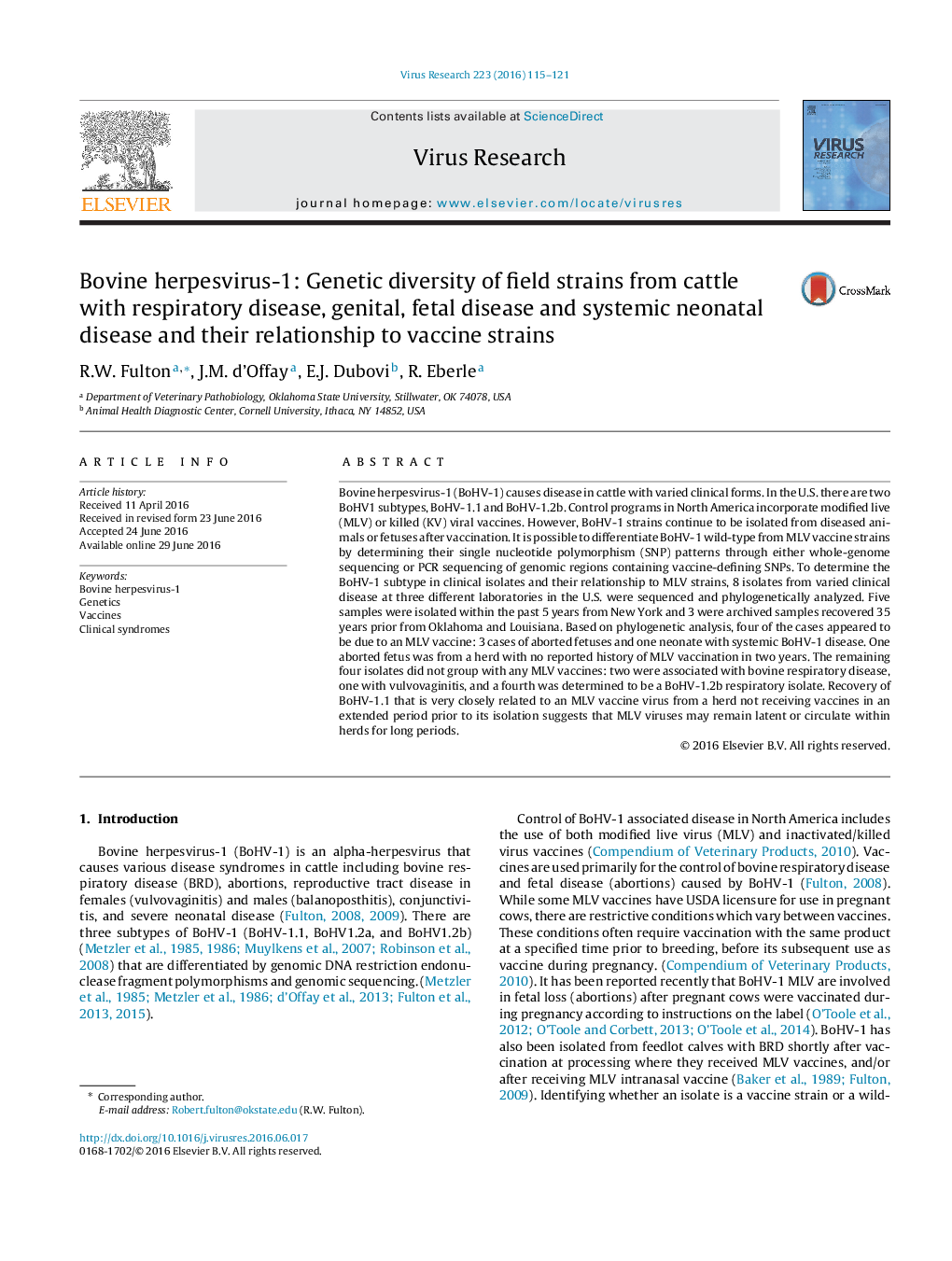| Article ID | Journal | Published Year | Pages | File Type |
|---|---|---|---|---|
| 6142015 | Virus Research | 2016 | 7 Pages |
Abstract
Bovine herpesvirus-1 (BoHV-1) causes disease in cattle with varied clinical forms. In the U.S. there are two BoHV1 subtypes, BoHV-1.1 and BoHV-1.2b. Control programs in North America incorporate modified live (MLV) or killed (KV) viral vaccines. However, BoHV-1 strains continue to be isolated from diseased animals or fetuses after vaccination. It is possible to differentiate BoHV-1 wild-type from MLV vaccine strains by determining their single nucleotide polymorphism (SNP) patterns through either whole-genome sequencing or PCR sequencing of genomic regions containing vaccine-defining SNPs. To determine the BoHV-1 subtype in clinical isolates and their relationship to MLV strains, 8 isolates from varied clinical disease at three different laboratories in the U.S. were sequenced and phylogenetically analyzed. Five samples were isolated within the past 5 years from New York and 3 were archived samples recovered 35 years prior from Oklahoma and Louisiana. Based on phylogenetic analysis, four of the cases appeared to be due to an MLV vaccine: 3 cases of aborted fetuses and one neonate with systemic BoHV-1 disease. One aborted fetus was from a herd with no reported history of MLV vaccination in two years. The remaining four isolates did not group with any MLV vaccines: two were associated with bovine respiratory disease, one with vulvovaginitis, and a fourth was determined to be a BoHV-1.2b respiratory isolate. Recovery of BoHV-1.1 that is very closely related to an MLV vaccine virus from a herd not receiving vaccines in an extended period prior to its isolation suggests that MLV viruses may remain latent or circulate within herds for long periods.
Related Topics
Life Sciences
Immunology and Microbiology
Virology
Authors
R.W. Fulton, J.M. d'Offay, E.J. Dubovi, R. Eberle,
